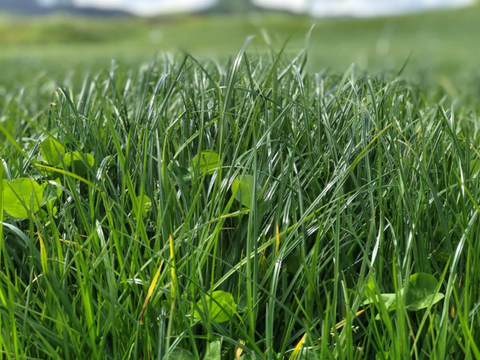Tips for Planting Grass Seed in Fall: A Complete Guide
A well-maintained lawn can make your home look more beautiful and increase your home's value. Fall is an excellent time to plant grass seed as the cooler temperatures and increased moisture help new grass grow faster and stronger.
But planting grass seed in the fall season can be tricky, and you need to follow specific tips to ensure a lush and healthy lawn. In this article, we will provide you with expert tips for planting grass seed in fall.

I. Why Fall is the Best Time to Plant Grass Seed?
Fall is considered the best time to plant grass seed for several reasons. First, the soil is still warm from the summer months, which provides the optimal conditions for seed germination. Cooler temperatures and increased rainfall also help to keep the soil moist, which is crucial for seedling growth.
Additionally, there is typically less competition from weeds and other plants in the fall, which means that your grass seed will have a better chance of establishing strong roots before winter.
Finally, fall-planted grass seed has a longer growing season ahead of it, allowing the roots to grow deeper and stronger before the hot summer months arrive. For these reasons, fall is often considered the ideal time for lawn renovation projects and establishing new lawns from seed.

II. Tips for Planting Grass Seed in Fall: A Guide to a Beautiful Lawn
Planting grass seed in the fall can be a great way to establish a lush, green lawn. Here are some tips to help you get started:
1. Choose the right seed
The first step to planting grass seed in the fall is to choose the right type of seed for your lawn. Different types of grass have different growing requirements, such as the amount of sunlight, soil type, and climate. If you're not sure which type of grass seed to choose, consult with a gardening expert or local nursery. Some common types of grass seeds for fall planting include Kentucky Bluegrass, Perennial Ryegrass, and Tall Fescue.
2. Prepare the soil
The soil is a crucial component for successful grass seed planting. It's important to remove any debris or existing grass from the planting area to create a clear and even surface. Use a rake or tiller to loosen the soil and create a depth of at least 6 inches. This will allow for better water absorption and root growth.
3. Plant the seed
Once the soil is prepared, it's time to plant the grass seed. Follow the recommended seeding rate for your particular type of grass, as planting too much or too little can affect growth. Use a seed spreader to ensure even distribution and avoid clumps or bare spots.

4. Water properly
Water is essential for the germination of your grass seed. After planting, water the seed regularly to keep the soil moist but not waterlogged. It's important to water deeply but infrequently, rather than shallowly and often. Overwatering can cause the seeds to rot, while underwatering can result in poor growth.
5. Fertilize
Fertilizing your newly planted grass seed is crucial for its long-term health. A high-quality fertilizer that is rich in phosphorus and nitrogen can help promote root growth and ensure a healthy, lush lawn. Follow the instructions on the fertilizer packaging for application rates and timing.
6. Maintain your lawn
Once your grass seed has germinated, it's important to maintain your lawn to ensure optimal growth. Mow the lawn regularly and adjust the blade height according to the type of grass. Water the lawn deeply but infrequently, and avoid watering during peak sunlight hours. It's also important to monitor for weeds, pests, and diseases, and take action if necessary.
III. Types of grass seeds that can be planted in the fall
There are several types of grass seeds that can be planted in the fall, including:
1. Kentucky Bluegrass
This popular cool-season grass is known for its fine texture and dense growth habit. Kentucky Bluegrass is ideal for lawns with high traffic and is resistant to drought and disease. It thrives in full sun to partial shade and requires moderate maintenance.
2. Pampas Grass
A warm-season grass that is native to South America, Pampas Grass is known for its large, feathery plumes that can grow up to 10 feet tall. It is often used as an ornamental plant in landscaping, and its plumes are popular for use in floral arrangements. Pampas Grass requires full sun and moderate maintenance.
3. Tall Fescue
A cool-season grass that is known for its tolerance to drought and shade, Tall Fescue is a popular choice for homeowners who want a low-maintenance lawn. It has a coarse texture and is ideal for areas with full sun to partial shade. Tall Fescue is also resistant to many common pests and diseases.

4. Perennial Reed
Another ornamental grass, Perennial Reed is known for its tall, slender stems and feathery seed heads. It is a cool-season grass that grows best in full sun to partial shade and is ideal for planting in wet areas such as near ponds or streams. Perennial Reed requires moderate maintenance and should be cut back in the late winter or early spring.
5. Dallisgrass
A warm-season grass that is native to the southern United States, Dallisgrass is often considered a weed due to its aggressive growth and tendency to crowd out other grasses. However, it is also used as forage for livestock and has a high nutritional value. Dallisgrass grows best in full sun and requires regular mowing to prevent seed production and spreading.
III. Conclusion
In conclusion, planting grass seeds in the fall season can be a great way to achieve a beautiful and healthy lawn. However, it's essential to follow the right steps and take care of your lawn to ensure the best results.
Don't forget to buy high-quality grass seeds from a trusted provider, such as The Rike, to get the best results. By following these expert tips for planting grass seed in fall, you'll be well on your way to a lush, green lawn next spring.





Leave a comment